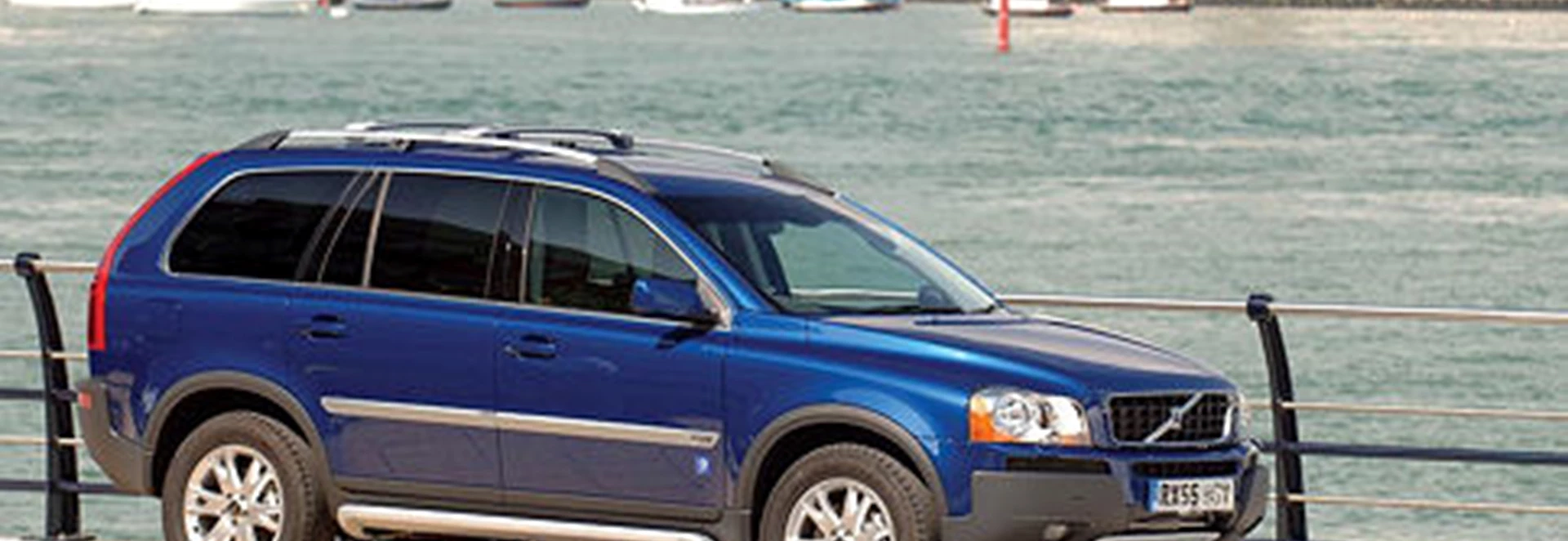The Ocean Race special edition of the Volvo XC90 is appropriately named because, frankly, the Swedes are all at sea with this one, drifting aimlessly. Even with its excellent navigation system, they have no clear sense of direction of where they want to go with this car - except make money.Let's be clear right from the start. I have always liked the XC90, combining superb Volvo build quality with the visibility and safety benefits of a sturdy 4x4. From the moment I cast eyes on it at the launch four years ago I fell for its looks, styling and practicality.And I wasn't alone. Even before it made it to the showrooms, the company had taken more than 2000 advance orders and sales have continued on a crest of a wave since then to make the car not only Volvo's first SUV but also its best-selling model, capturing more than 18% of the company's total sales and making it the third best-selling SUV in the UK after the Land Rover Discovery and the BMW X5."Masculine but not macho; muscular but not aggressive" was how Volvo design boss Peter Horbury described it when it was revealed. It was, and continues to be, a great success, but Volvo has now started mucking about with it, feeling the need to embellish what was already a very nice craft, with a fine cut to its jib.The Ocean Race is now the flagship of the fleet, with a price to match. Everything that can be bolted, stuck or otherwise attached to this car has been, and the end result is an overabundance of goodies which have transformed this "masculine and muscular" vehicle into a multi-accessorised model whose lily has been over-gilded.It marks the company's involvement in the round-the-world yacht race which began in November and runs until June, and Volvo has used the connection to work in some maritime marketing messages. It has room for a "crew" of seven with a graceful ride on "land - wet or dry". This is the ultimate vehicle, they say, to take you and your gear from "port to port" (presumably they don't mean from left to left, but rather A to B).On the outside that means roof protector ribs, silver crossbars and aluminium running boards, all of which spoil the smooth lines of the base model and in the case of the running boards add absolutely nothing, except road dirt to your trousers as you get in and out.The Ocean Race is available only in Ocean Blue pearl paintwork which is the distinguishing feature apart from the discreet Ocean race badges on the front doors. Inside there's special leather upholstery with blue stitching, Ocean Race aluminium tread plates, textile mats with blue piping and, in the case of my test car, light wood panel inlays. Oh, and you get a special Ocean Race keyring too.Manufacturers these days make healthy profits from the bolt-on bits and, apart from the hire car and fleet market, very few cars are sold at the entry level for the basic on-the-road price. Unlike a few years ago when, in the case of BMW, even the radio was an optional extra, most cars come with all the pieces of essential equipment. But now there are so many attractive accessories that it's very tempting to sign up for them and then find they've added several thousands of pounds to the final bill.But it's on special-edition models like this that the manufacturers really coin it in. The Ocean Race comes with a vast amount of standard equipment which runs to around 75 individual items listed on an A4 page of tiny print. But on my test car there were another 12 options which added a breathtaking £10,907 to the final bill.The Communications Pack of satellite navigation, SOS alert and integrated phone adds almost £3000 and the intriguingly-named rear-seat entertainment, which is in fact a headrest-mounted DVD system, costs £2175. The Premium Pack of high quality sound system and bi-xenon headlamps is another two grand, and so it goes on down to the warning triangle - which surprisingly for safety-conscious Volvo - doesn't appear to be a standard issue, but comes in at a loose-change level of £23.93.One extra I'm not sure about is the BLIS, Blind Spot Information System, which was announced last year. At £450 it seems a valuable contribution to road safety, but after having it for a week I can't help thinking it's little more than a gimmick. It's a small digital camera system built into both door mirrors which monitors the area alongside the vehicle for cars or motorbikes and alerts you to anything which might be in the blind spot by an orange light on the inside of each A-pillar.I'm inclined to think it's been developed in response to complaints from owners about the massive B-pillar, which does block out an all-round view - but surely any decent driver should be keeping open a weather-eye all the time in any case, rather than having to rely on a 21st-century version of a crow's nest. On my test car, road salt and grit kept blocking the lens, rendering the system inactive - a bit like having Admiral Nelson on watch with dirt in his good eye. Engine 2401cc, 5 cylinders Power 185bhp Fuel/CO2 31.4mpg / 239g/km Acceleration 0-62mph: 11.5 seconds Top speed 121mph Price £35,775 Details correct at publication date

Our Rating



